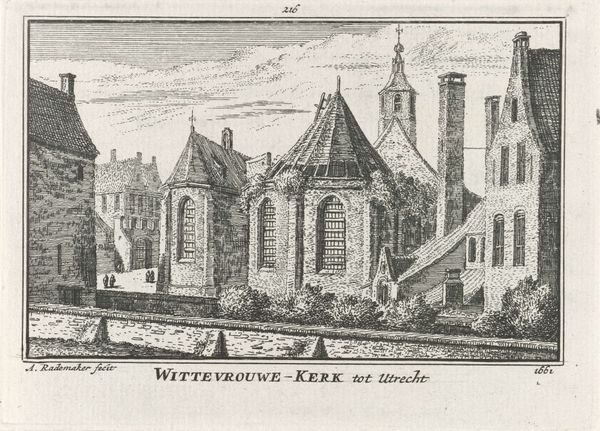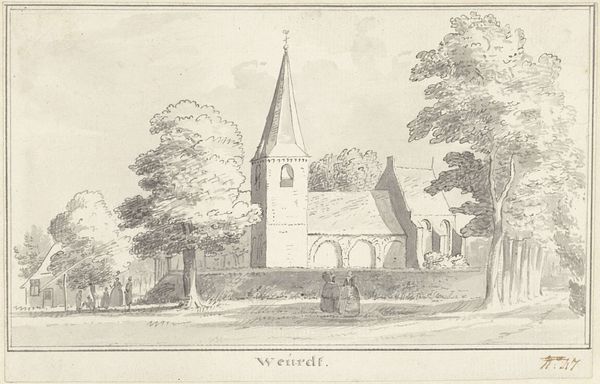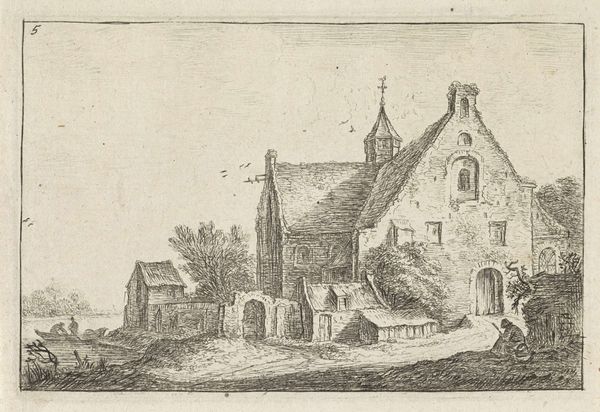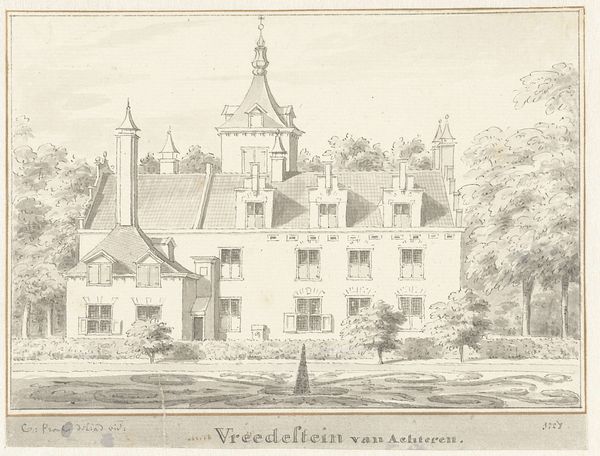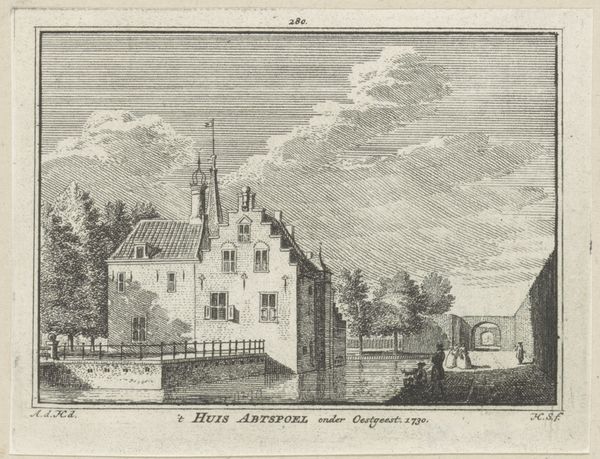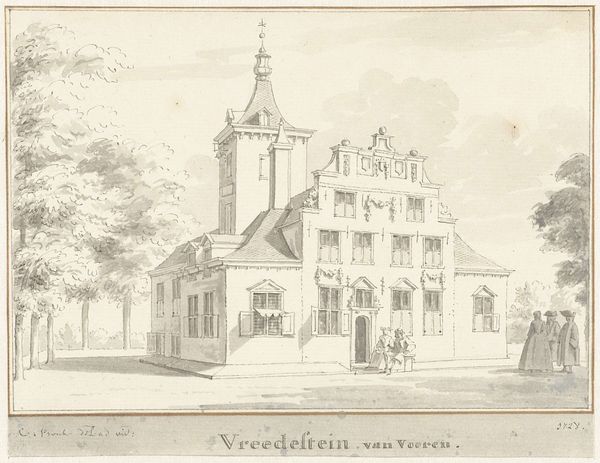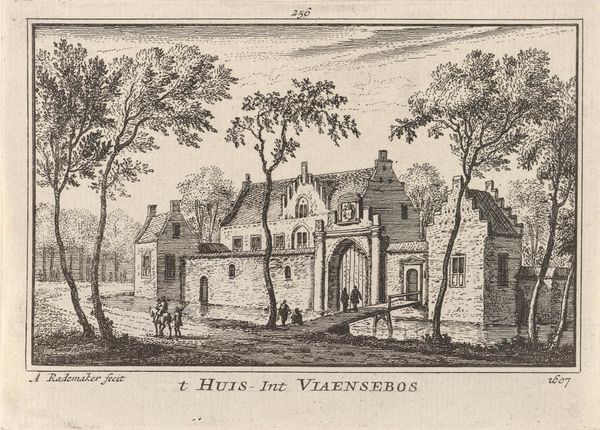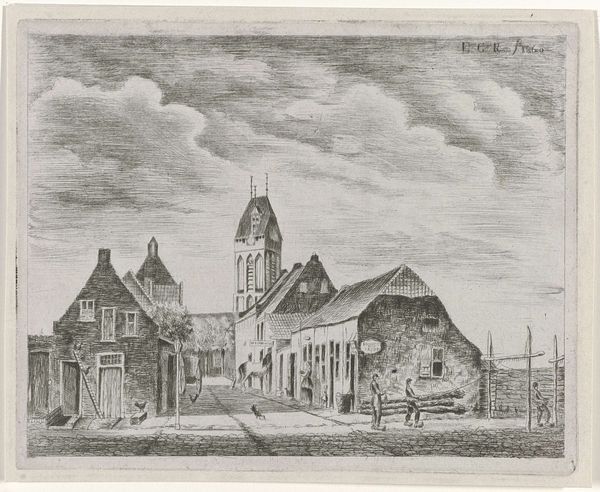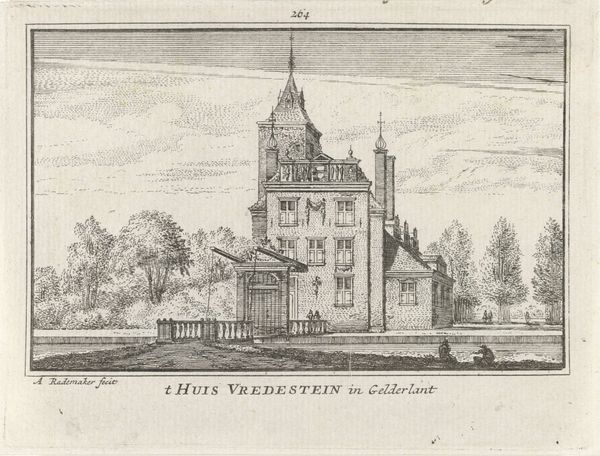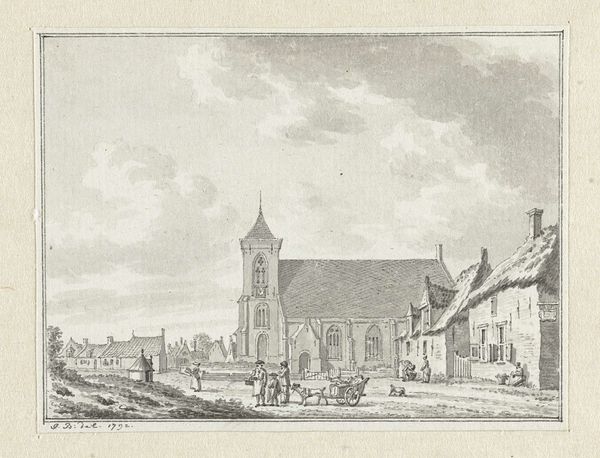
print, etching, engraving
#
baroque
# print
#
etching
#
old engraving style
#
landscape
#
pen-ink sketch
#
cityscape
#
engraving
Dimensions: height 80 mm, width 115 mm
Copyright: Rijks Museum: Open Domain
This is Abraham Rademaker's "Gezicht op Vreeswijk," made around 1620. This drawing shows the village of Vreeswijk with a light ethereal aesthetic, achieved through delicate lines and monochromatic shading. The structure of the artwork uses linear perspective, drawing the eye from the foreground's tranquil waterway to the architectural details of the buildings. Notice how Rademaker employs structural clarity, organizing space through geometric forms and contrasting textures. The buildings, rendered with sharp angular lines, stand in contrast to the softer, more organic shapes of the trees and clouds. This creates a visual dichotomy between the man-made and the natural. The semiotic structure relies on recognizable symbols: the church spire signifies spiritual authority, and the boats hint at trade and movement. The arrangement, however, resists a singular reading. The buildings are not merely representative but become abstract shapes which form a dialogue between form and function. Rademaker prompts us to appreciate the interplay of form and representation, inviting ongoing interpretation.
Comments
No comments
Be the first to comment and join the conversation on the ultimate creative platform.


